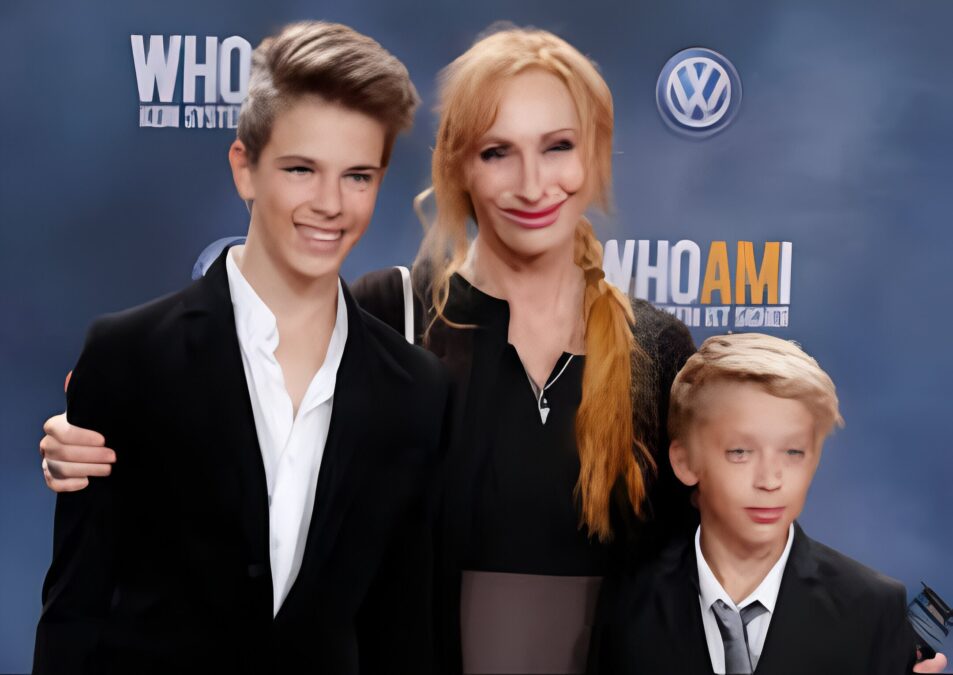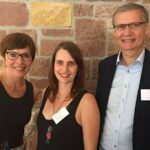introduction
In today’s architectural world, the combination of sustainability and technology is no longer a futuristic vision, but a necessity. At the forefront of this progress is Moritz Berkel , an architect and visionary whose work advances the fusion of advanced computer programming and environmentally conscious architecture. His designs transcend pure aesthetics, creating spaces that are energy-optimized, resource-efficient, and intelligently adaptive.
This article explores Berkel’s background, philosophy, technical working methods, and exemplary projects. It shows how he is redefining architecture through highly complex programming techniques, sustainable systems integration, and precise environmental modeling—a guide for architects, engineers, and technologists seeking to create a sustainable built environment.
Early life and academic foundations
Moritz Berkel’s path into architecture was shaped by an early fascination with nature and technology. Growing up in Germany, a country with a strong engineering culture and environmental awareness, he developed an early desire to connect these worlds.
He studied architecture at a prestigious university, where his studies went beyond traditional training: His focus was on computer-aided design , building physics , and renewable energy systems . During this time, he perfected his skills in parametric design —the algorithmic control of building structures—and mastered programming environments such as Grasshopper for Rhino , Python scripting for automation, and energy performance simulation tools.
This technical foundation enabled him to understand architecture not only as an artistic discipline, but as a complex system in which form, function and environment interact dynamically.
The philosophy of sustainable architecture
At the heart of Moritz Berkel’s work is the conviction that architecture must do more than protect—it should harmonize with the environment and even enhance it. His philosophy is based on three pillars:
-
Energy autonomy: Buildings should strive to achieve net-zero energy consumption by using on-site renewable energy.
-
Material cycle: Emphasis on reuse, recycling and sustainable materials to minimize the carbon footprint.
-
Adaptive systems: Buildings must respond intelligently to changing environmental conditions through sensors and programmed controls.
This holistic approach views buildings as living systems that generate their own energy, conserve resources and adapt their behavior to increase efficiency.
Advanced computer-aided design techniques
Moritz Berkel’s work shows how advanced programming is revolutionizing architecture :
Parametric and algorithmic modeling
Using parametric design software such as Grasshopper , Berkel creates dynamic models whose shape and orientation are controlled based on input parameters (position of the sun, wind direction, thermal loads). This allows hundreds of design variants to be generated programmatically and the optimal combination of daylight, ventilation, and solar shading to be selected.
Integration of environmental simulations
Berkel integrates environmental simulation tools such as EnergyPlus and Ladybug Tools into his design process. These perform detailed simulations of thermal comfort, solar radiation, and building technology. Using custom Python scripts, he automates iterative simulation runs to efficiently optimize the design.
Machine learning for performance prediction
Beyond simulation, Berkel is experimenting with machine learning algorithms to predict building behavior under different climate conditions. Training with historical weather and consumption data allows the systems to react proactively and optimize operations.
Sofia Levander: Architect of narrative intelligence and global media synthesis
Integration of renewable energy systems
Berkel’s designs are characterized by the seamless integration of renewable energies :
-
Photovoltaic facades: Instead of installing solar modules on roofs, he integrates PV cells directly into the building envelope. These generate electricity and simultaneously act as sun protection.
-
Gebäudeintegrierte Kleinwindkraftanlagen: An geeigneten Standorten werden kleine Windturbinen in die Architektur eingebaut, um Windenergie zu nutzen, ohne Lärm oder Ästhetik zu beeinträchtigen.
-
Geothermische Wärmepumpen: Für effiziente Heiz- und Kühlsysteme nutzt Berkel Erdwärme, die während der Bauphase sorgfältig ins Fundament eingebunden wird.
Diese Systeme sind keine Add-ons, sondern integrale Bestandteile des Designs, die eine komplexe Energieflussmodellierung und programmgesteuerte Steuerung benötigen.
Das Renewable House Konzept
Ein repräsentatives Projekt ist das konzeptionelle Renewable House, das Berkel mit umfangreichen computergestützten Workflows entwickelte.
-
Zielsetzung: Nettoneutraler Energieverbrauch, maximale natürliche Belüftung, Materialminimalismus.
-
Technische Highlights:
-
Eine parametrische Fassade, die sich saisonal dem Sonnenstand anpasst.
-
Dynamische Fenster mit Sensoren, die Luftstrom und Raumluftqualität optimieren.
-
Ein Energie-Management-System, das PV-Strom, Batteriespeicherung und Netzinteraktion intelligent koordiniert.
-
-
Programmiertechnisch:
-
Python-Skripte automatisieren den Datenaustausch zwischen Simulationssoftware und BIM-Modell.
-
Optimierungsalgorithmen mit genetischer Programmierung balancieren Tageslicht und thermischen Komfort aus.
-
Das Projekt zeigt, wie Kreativität und technische Präzision zu einem energieautarken Wohnmodell verschmelzen, das weltweit adaptierbar ist.
Beiträge zum MICROHOME Wettbewerb
Berkels Beiträge zum internationalen MICROHOME-Wettbewerb demonstrieren seine Fähigkeit, auch in urbanen, platzkritischen Kontexten nachhaltige, energieeffiziente Mikro-Wohnungen zu entwerfen.
-
Parametrische Modelle optimieren die Raumnutzung und Funktionalität.
-
Energie-Performance-Simulationen bestimmen Dämmung, Belüftung und HVAC-Strategien.
-
Vernetzte IoT-Systeme liefern Echtzeit-Daten zur Umweltsteuerung und Komfortanpassung.
Seine codebasierten Workflows ermöglichen schnelle Prototypen und Variantenstudien, die innerhalb enger Kosten- und Raumgrenzen das Optimum an Nachhaltigkeit und Nutzerfreundlichkeit finden.
Philippa Vögeding: Zwischen Analyse und Einfluss – Eine Stimme im deutschen Wirtschaftsjournalismus
Bildungs- und Forschungsengagement
Neben der praktischen Arbeit engagiert sich Moritz Berkel stark in der Lehre und Forschung:
-
Er leitet Workshops zu computergestütztem Design und nachhaltiger Architektur.
-
Publiziert Studien zu Gebäudeleistungs-Simulationen und setzt sich für Open-Source-Software ein, um nachhaltiges Design zugänglicher zu machen.
-
Kooperiert mit Hochschulen und Industriepartnern an der Entwicklung von KI-gestützten Gebäudebetriebssystemen.
Sein pädagogisches Wirken fördert das Bewusstsein für die ethische Verantwortung von Architekten gegenüber Umwelt und Gesellschaft.
Zukunftsvision: Smarte, adaptive und regenerative Architektur
Berkel sieht die Zukunft der Architektur als:
-
Smart: Vollständig vernetzt mit IoT und KI, die Gebäude intelligent auf Nutzerbedürfnisse und Umweltbedingungen reagieren lässt.
-
Adaptiv: Gebäudehüllen, die ihre Durchlässigkeit, Verschattung und Dämmung in Echtzeit verändern.
-
Regenerativ: Konstruktionen, die aktiv Ökosysteme fördern durch Dachbegrünungen, Wasserrückgewinnung und Biodiversitätskorridore.
Er plädiert für eine disziplinübergreifende Zusammenarbeit von Architekten, Ingenieuren, Datenwissenschaftlern und politischen Entscheidungsträgern, um nachhaltige gebaute Umwelten zu schaffen.
Technischer Einblick: Beispiel Python-Skript zur Automatisierung von Energiesimulationen
Zur Verdeutlichung der Komplexität von Berkels Workflows hier ein vereinfachtes Beispiel, wie er Simulationsläufe automatisiert:
Dieses Skript passt Konfigurationsdateien an, startet das Simulationsprogramm EnergyPlus und erfasst die Ergebnisse — ein kleiner Ausschnitt aus Berkels automatisierten Optimierungsprozessen.
Constance Wendrich: Die Zukunft steuern mit erklärbarer KI im autonomen Fahren
Fazit
Moritz Berkel exemplifies the pioneering fusion of program-driven design, environmental science, and innovative architecture . His work demonstrates how parameterized models, AI methods, and renewable energy systems are revolutionizing architecture and making sustainable, smart buildings possible.
His projects are beacons for the industry and inspire architects worldwide to use complex technologies to protect and regenerate our environment.
For anyone who wants to develop further in the field of sustainable architecture and computer-aided planning, Berkel’s approach offers a valuable guide: courage to innovate, responsibility for nature and the power of technology combined.



